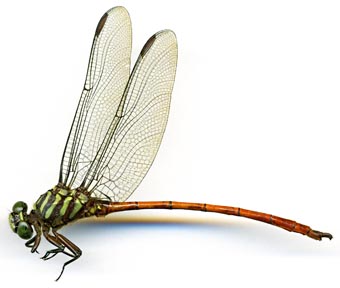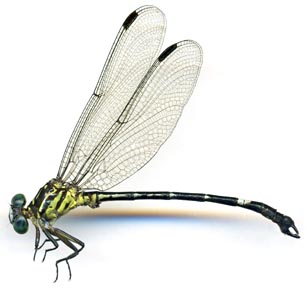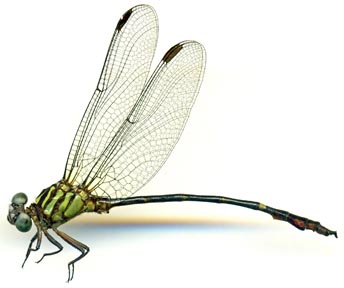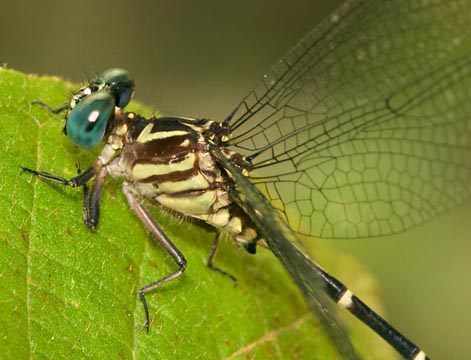| The family Gomphidae is represented in Ecuador by nine genera and almost species. Clubtails are easy to distinguish from other Ecuadorian dragonflies by the widely separated eyes; in all of the other families, the eyes meet on top of the head. They vary from 3 cm long (Progomphus pygmaeus) to more than 6 cm long (Aphylla). Most have a dark brown ground color with pale stripes and spots that start out cream to yellow in young adults and usually change to blue or green with age. Thoracic color patterns and male appendages are the characters most used for identifying species. Most species breed in running water, ranging from tiny spring seeps to large rivers, but a few (e.g., Aphylla) are associated with ponds or swamps. Although the adults are generally slower fliers than the libellulids they resemble, they can be quick to escape capture. Most species hunt from perches rather than patrolling for flying prey. The males of some species patrol stream margins looking for females, while others defend particular pools or riffles in streams or spring seeps. Immature adults often spend time far from breeding sites feeding in forest light gaps, in the canopy, or along forest edges. |






